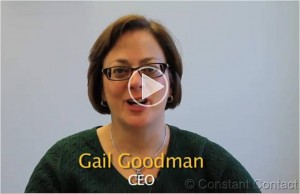 Let me identify a gender narrative that some of you will say is sexist or at least inaccurate. Please remember that I am not making up these narratives, only exposing what already may exist in the minds of some prospects. I am using this as an explanation of how narrative marketing and selling works. Did I mention that I have two daughters? Enough caveats.
Let me identify a gender narrative that some of you will say is sexist or at least inaccurate. Please remember that I am not making up these narratives, only exposing what already may exist in the minds of some prospects. I am using this as an explanation of how narrative marketing and selling works. Did I mention that I have two daughters? Enough caveats.
Let’s say you are marketing or selling to HR professionals. It’s interesting that about 70-75% of HR professionals are women. Why are there more women than men in HR? I think it’s because HR is a service-based function. And women are, or have been, culturally assigned or relegated a role as “helpmates.” Feminists would say this is because of unfair discrimination against women, and this is also correct. I’m not trying to make a value judgment or solve a discrimination issue. What something is and why it is, are two different things, though I suspect that some could accuse me of enabling this discrimination in a blame the victim mode. That’s not my intention.
There is a long cultural history in the US of women taking on the role of “helpmate.” George Lakoff calls the situation women face the “Women’s Lot” narrative. For a long time women could only be nurses, not doctors. However, they could help doctors. Women could be secretaries until they graduated to become “assistants” so they could presumably help their bosses better. They could help in HR, but not become the CEO. They can be mothers and help their children, or helpmates to their spouses. But “helpmate” is one role in the “Women’s Lot” narrative.
Yes there are other roles that women have as options. A woman can be the “smart girl” who succeeds because of her intelligence, pluck and drive. Or a woman can be the “pretty girl” who uses her looks or sex to get ahead in a man’s world. (The use of the word “girl” is noted in these examples.) But in the professional business world there are only a few roles that apply to the Women’s Lot narrative, of which the primary is “helpmate”.
So what characteristics does a helpmate have, whether they are male or female (because the role can apply to either gender)? They work hard to serve others, often getting little credit for themselves. So any marketing narrative and message to this prospect constituency must contain these key elements.
1. It must acknowledge their hard work, their difficulty, their long hours and effort,
2. It must say thank you for that work, and
3. It must promise help, so they can be more effective.
These three things may also apply to the “smart girl” or “smart boy,” but they are especially important to the helpmate.
So how would you market to this group? A high level narrative might sound something like this, “Thank you. We understand the difficulty of what you are trying to do for your company, for your employees, and your family. Let us help you, so you can help them.” The general narrative can then be followed with specific stories about how your products and services can help. This high level narrative also applies to many other marketing prospects, including the “smart girl”.
I gave examples of thanking customers in Giving Thanks, but one of the best implementations of this messaging I’ve seen recently is a “thank you” video from the CEO of Constant Contact, Gail F. Goodman.
Hmmm? I wonder why I don’t hear this from more male CEOs? I don’t presume to know Gail Goodman, but could it be, the smart girl succeeds and breaks out of the Woman’s Lot, and perhaps in remembering the role of helpmates, applies this narrative in her high level messaging? I also imagine that this general narrative helps set the tone for employees of this company and becomes part of the brand.
Lee Stocking
Prairie Sky Group
Driving Sales THrough Customer Focused Marketing
651-357-0110 (Cell 24×7)
lee.stocking@gmail.com
